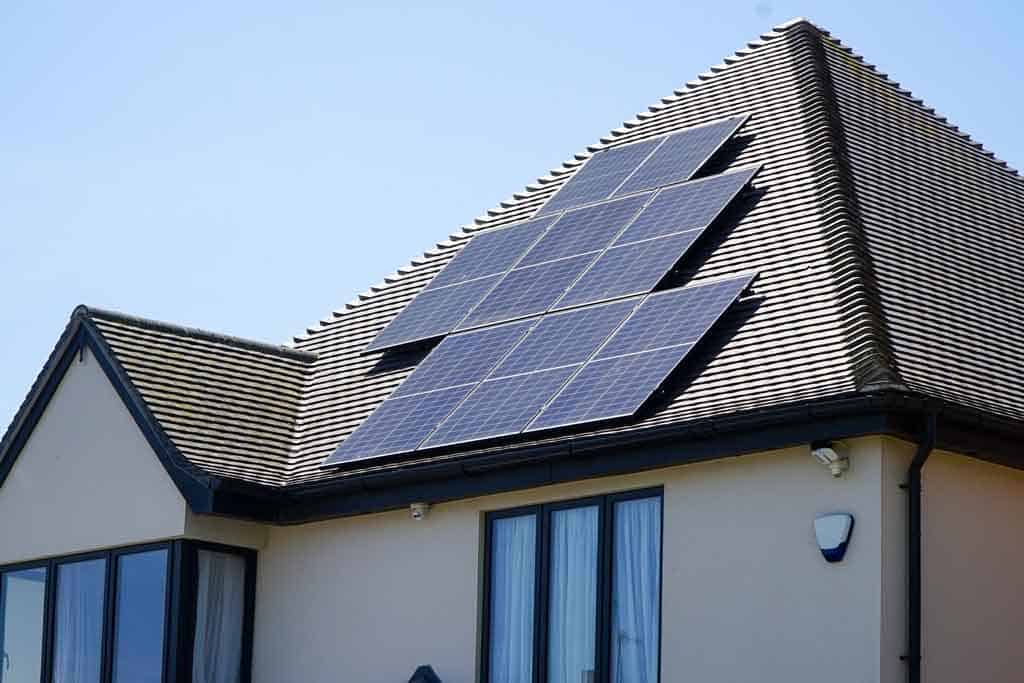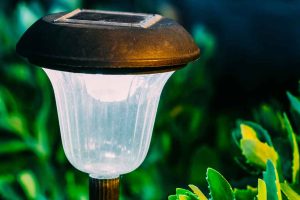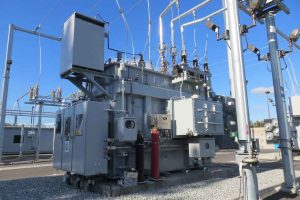You’ve probably heard of solar panels or at least seen them on houses. But what exactly are they, and are home solar batteries worth it, a viable alternative to solar panels for the home? If you’re interested in generating your electricity but solar panels aren’t an option, there are still several other ways you can go about it.
One option is to use a wind turbine. Wind turbines use the wind to turn the blades, which spin a generator to create electricity. A water wheel is another option. A water wheel is another option. Water wheels use the flow of water to turn the wheel, which then turns a generator to create electricity.
Lastly, you could use a hydroelectric dam. Hydroelectric dams work by using the force of the water flowing through the barrier to spin a generator and create electricity. Here are ten alternative solar panels for homes that might work better for you.
Solar Panels For Home
Photovoltaic (PV) and thermal solar panels are the two types of solar panels. The heat from the sun is converted into electricity by PV panels, while sunlight is converted directly into electricity by thermal systems.
Depending on your energy needs and budget, you should choose a plan that fits your particular needs.
On average, it takes about ten years for homeowners to pay off their investment in this equipment if they sell all their excess energy back to utility companies at retail rates without subsidies or tax breaks.
The 10 Alternatives To Solar Panels For Home
If you’re wondering what the alternatives to solar panels are, you’ve come to the right place. We’ll give you ten great options that won’t break the bank and will help keep your home as environmentally friendly as possible.
- Solar Shingles
- Skylights
- Building-Integrated Photovoltaics
- Thin Film
- Concentrated Solar Power (CSP)
- Geothermal Energy
- Biomass Energy
- Wind Turbines
- Hydroelectricity
- Tidal Energy
Generate Your Power And Save, you can save money on your electricity bill if you’re looking for an alternative to solar panels.
Solar panels are expensive and not the only way to generate power. They are not the only way to save money on electricity bills either. Alternatives can help reduce energy costs without breaking the bank by installing expensive solar panels at home or office.
1.Solar Shingles
Solar shingles are another type of photovoltaic device that can be installed on the roof of a house. Although they look like regular shingles, these solar panels can absorb light to generate electricity. They are thin, lightweight, and easy to install, making them more affordable than traditional solar panels.
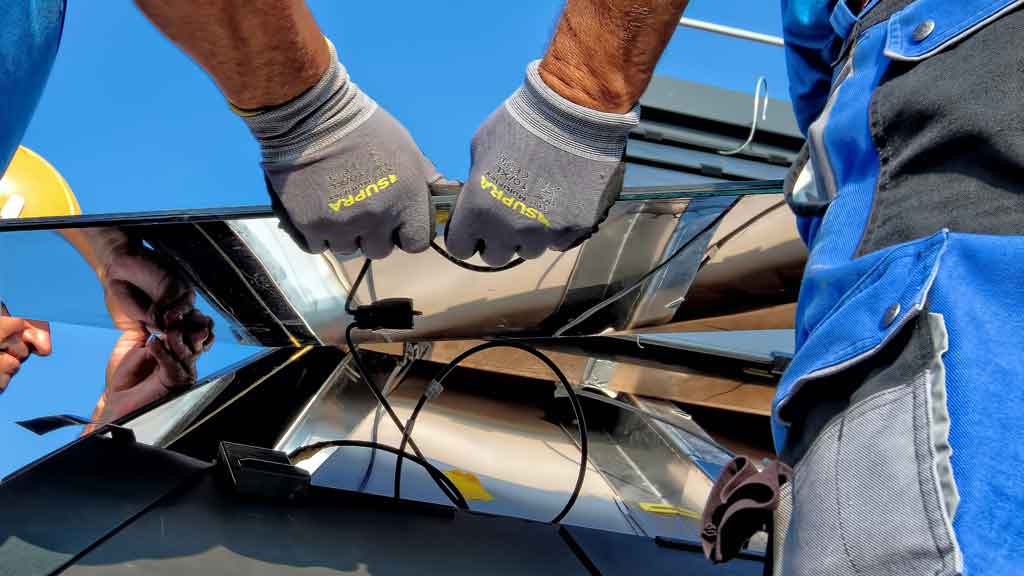
Additionally, they are a good choice for homeowners with inadequate roof space for installing traditional solar panels because each panel only covers a small area of your roof and alternatives to solar panels for home.
You’ll also need less time to install your solar shingles than other types of photovoltaic devices since there’s no need for wiring or mounting hardware—affix them onto your existing roof deck and make sure it’s sturdy enough.
2.Skylights
Skylights are a great alternative to solar panels, especially if you already have any skylights that are alternatives to solar panels for home.
Having them already installed means you don’t have to install anything, and they don’t take up much space. However, they aren’t very efficient at collecting energy compared to other alternatives like BIPV and CSP.
- Cost: The cost of installing skylights varies depending on the size of your roof and whether or not you need new construction or renovation work done on the ceiling before installing them. This does not include any labor costs for removing old shingles that may be needed when replacing existing roofs with new ones.
- Amount of power generated: Skylight installations produce roughly 50% less energy than a typical solar panel installation.
- Advantages: Skylights require little maintenance and don’t take up much space on your roof, unlike traditional solar panels, which take up entire roofs if installed correctly.
- Disadvantages: Their limited efficiency compared to other alternative energy technologies such as BIPV (building integrated photovoltaics) or CSP (concentrating solar power).
- Installing skylight systems isn’t always worth it unless there’s another reason why someone might want them installed besides generating electricity for their home and alternatives to solar panels for home.
Discover Why Green Energy Is Important For Your Home
Learn about the benefits of solar energy and how it can save you money on your energy bill. Schedule a free consultation with us, and we’ll help you find the right solar system for your home.
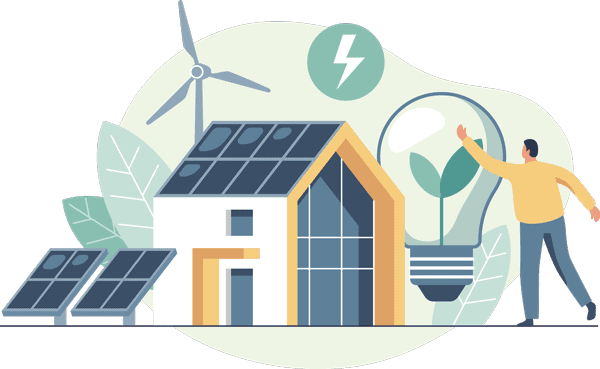
3. Building-Integrated Photovoltaics
Building-Integrated Photovoltaics (BIPV) is a type of solar energy that uses photovoltaic cells to create electricity while also serving as a building material. This is an alternative to solar panels for homes.
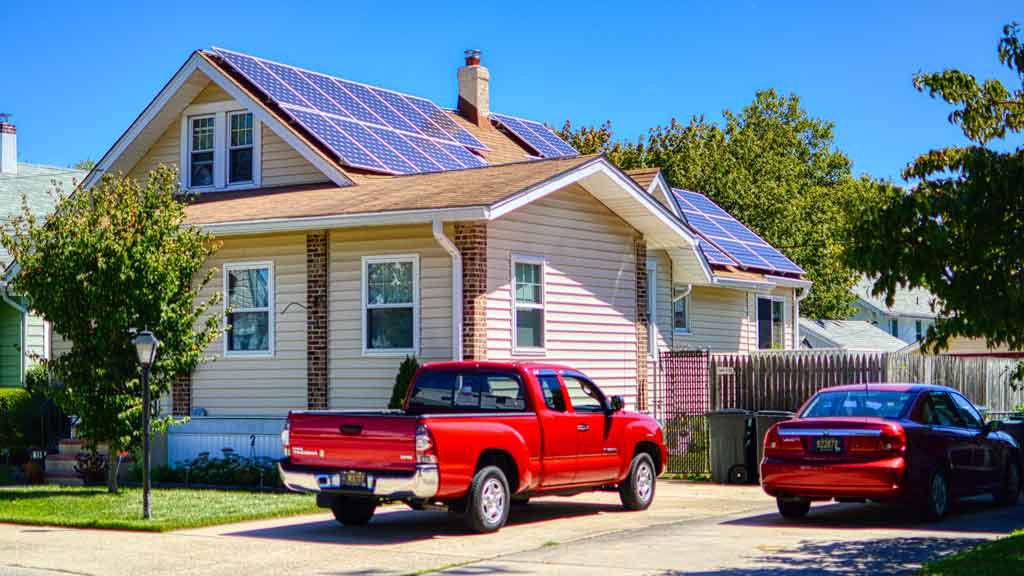
BIPV replaces windows and roofs with transparent or translucent solar panels, providing seamless integration between the structure and the technology.
It can be used on buildings of all sizes from tiny residential homes to large office towers—and it can be installed on just about any surface: wood, glass, metal siding, and more! BIPV products are generally less expensive than traditional solar panels due to their versatility in design.
Building-integrated photovoltaics is an excellent alternative to traditional solar panels because it’s aesthetically pleasing without compromising function; these systems may even cost less than installing alternatives to solar panels for home.
Using BIPV for your home may not be suitable for everyone; however, if you live in an area with plenty of sunshine throughout most months. Then this could be an excellent option for producing clean energy at home while saving money over time as well.
4.Thin Film
Thin film is a growing technology that can be used to create solar panels with many different surfaces. It’s highly efficient, flexible, and lightweight. The technology has been used on the world’s most extensive stadium roof.
- Are you considering solar panels for your home but are looking for alternatives? Solar panels are a great way to reduce your energy bills and help the environment, but they’re not the only option. Here are a few other thin film options that may be right for your alternatives to solar panels for home.
- One alternative to solar panels is thin-film laminates. These laminates are applied directly to your roof and work by reflecting sunlight away from your home. This can help keep your home cooler in the summer and reduce energy bills.
- Another option is to install a reflective film on your windows. This type of film works similarly to thin-film laminates, but it’s applied to your windows instead of your roof. It can help keep your home cooler in the summer and can also reduce glare inside your home.
5. Concentrated Solar Power (CSP)
If you’re interested in generating your electricity but solar panels aren’t an option, there are still several other ways you can go about it. It is possible to use a wind turbine. Wind turbines use the wind to turn the blades, which spins a generator to create electricity.
Another option is to use a water wheel. Water wheels use the flow of water to turn the wheel, which then turns a generator to create electricity. Lastly, you could use a hydroelectric dam.
Hydroelectric dams work by using the force of the water flowing through the barrier to spin a generator and create electricity. Using this technology, you can produce electricity, heat water, or make hot air.
It differs slightly from photovoltaic systems because it uses a liquid as a heat transfer medium instead of direct sunlight hitting photovoltaic cells.
Molten salt is heated up by the sun’s rays being collected by mirrors or lenses to be stored in tanks until they are needed at night or during cloudy days when there is no Sunlight available for the generation of electricity using this system
6.Geothermal Energy
Geothermal energy is a form of renewable energy that uses the heat from the Earth to produce electricity. During the Gold Rush, steam engines powered mining operations.
Geothermal power plants use the Earth’s natural heat to generate electricity. These plants are used worldwide, especially where no rivers or streams are nearby.
A geothermal power plant is a great alternative to solar panels for home use. They are environmentally friendly and can save you money on your energy bill.
Geothermal systems use pipes to transport water underground, heated by natural hot rocks and pumped through the lines back up to your home or business building.
This hot water can be used directly (for example, heating your pool) or converted into steam that powers turbines to produce electricity.
Geothermal systems can also be installed as part of an air conditioning system so that when you have hot air blowing out of vents in the summertime, it’s coming from a source other than fossil fuels like coal or natural gas.
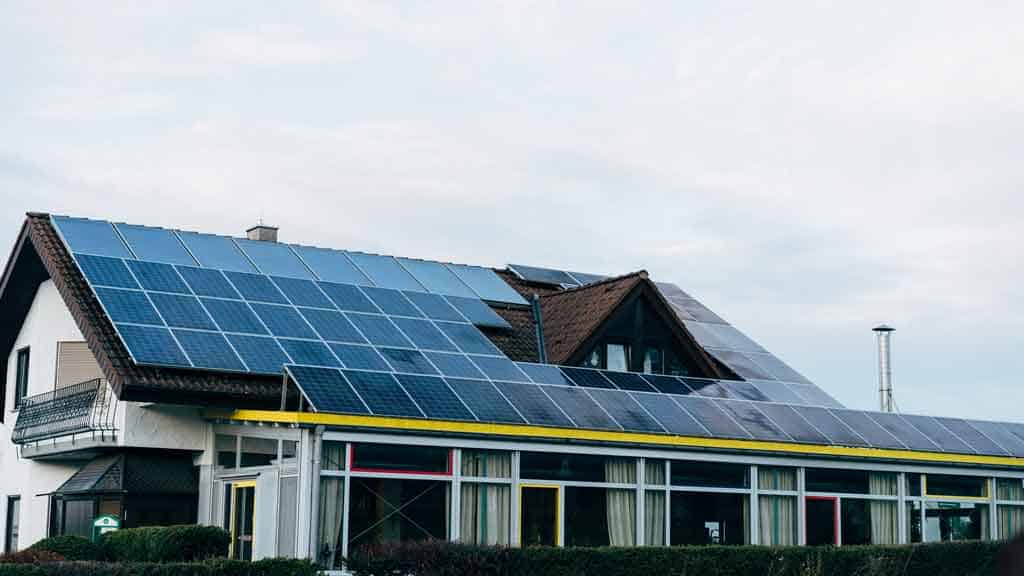
7.Biomass Energy
Biomass energy is a renewable source of fuel that comes from organic matter, such as wood, crops, and municipal waste. It can be used to produce heat, electricity, or as a transportation fuel.
Biomass energy has been around for centuries but was considered inferior to fossil fuels until recently. In the last few years, there has been a resurgence of interest in biomass as an alternative to fossil fuels. The following are some of the reasons for one of the alternatives to solar panels for home.
- Biomass is a renewable resource. Unlike finite fossil fuels, biomass can be replenished through sustainable practices like forestry and agriculture.
- Biomass is carbon-neutral. When burned, biomass emits the same amount of carbon dioxide absorbed during its growth cycle. This makes it a much cleaner energy source than fossil fuels.
- Biomass is versatile. As a result, it can generate electricity, heat homes, and cook food. Biofuels can also be produced to produce transportation fuels like bioethanol and biodiesel.
- Biomass is local. Biomass is plant or animal material utilized to generate electricity or heat. Unlike fossil fuels, biomass is renewable and produces little to no emissions. Biomass can be recycled in various ways, including wood pellets, wood chips, and agricultural waste.
Biomass can be used as a renewable energy source. You can find biomass materials right in your community. Second, its affordable biomass is often less expensive than other renewable energy options like solar panels.
Biomass primarily served the purpose of heating homes using fireplaces or open fires fueled by wood scraps. Biomass collectors were also added onto the chimney stacks at factories and power plants to convert the steam into usable heat for buildings nearby.
8. Wind Turbines
Wind turbines are used to generate electricity. They consist of a rotor (the part that spins) and a generator (the part that creates power). High in mountains or deserts, these systems are found in locations with the most wind.
There are many advantages to using wind turbines as an alternative to solar panels for powering homes and businesses. They’re more expensive to install, but they offer several advantages over solar panels.
Wind turbines can generate electricity day or night, whereas solar panels only generate electricity during the daytime. Wind turbines also have a much longer lifespan than solar panels, so you’ll get more bang for your buck in the long run.
If you’re considering an alternative to solar panels for powering your home or business, wind turbines are worth considering.
9. Hydroelectricity
Hydroelectricity is a renewable source of energy that can be used to generate electricity. It is the most widely used form of renewable energy and comes from the force of falling or flowing water.
Hydroelectric power stations are a great alternative to solar panels for home use. They use large machines to convert kinetic energy from flowing water into mechanical energy and electric current.
Hydroelectric power stations are more efficient than solar panels and can provide a steadier flow of electricity. Solar panels have been touted as the future wave regarding alternative energy sources, but hydroelectric power stations may be a better option, especially for homeowners.
Hydroelectricity is created by damming a river and using the water to power turbines that generate electricity. The efficiency of hydroelectric dams has improved over the years, and they now boast an average efficiency of around 80-90%. In contrast, solar panels have an average efficiency of just 15-20%.
Hydroelectric power is also more reliable than solar power. Solar panels rely on sunlight to generate electricity, meaning they only produce energy during the day, and their output can be affected by weather conditions.
A hydroelectric plant may need anywhere from several hundred to over 10,000 megawatts (MW) of capacity for operation, depending on location, size, and type.
10. Tidal Energy
The tides can be used to generate electricity using tidal energy. Waves are created by the gravitational pull from the moon and sun, which causes water to slosh back and forth between two sides of a body of water. As an alternative to solar panels for homes, this is also an option.
The topography around the ocean basin affects how high or low tides can get and how long they last. As tides rise and fall over time, there are periods where more water is flowing in (high tide) or out.
Because it relies on natural forces like gravity and density, tidal energy is considered a renewable form of clean energy because it won’t run out as fossil fuels can. But tidal power isn’t perfect.
It can be unpredictable depending on factors like rainfall affecting river flow rates and overall water levels within lakes or reservoirs near shorelines where turbines have been installed.
Seasonal changes such as increased wind speed during winter could lead to more frequent blackouts due to heavy winds knocking down wires connecting turbines.
Some people may not want their homes located near turbine sites because they would hear noise pollution caused by operating machinery during all hours throughout each day/night cycle. Tidal energy is one of the alternatives to solar panels for home.
Tidal power plants are also intermittent sources: when there’s no incoming solar radiation from sunlight hitting Earth’s surface directly overhead, wind speeds won’t be significant enough around Earth’s equator either.
Suppose one day happens without rain falling onto land. In that case, another day might occur without any precipitation anywhere else in the world outside those areas currently experiencing heavy downpours.
Conclusion
Alternatives to solar panels for home you choose a suitable alternative to solar panels can be daunting, so we created this guide for you. Remember to stay informed and ask questions when in doubt about your options. Thanks for reading!

